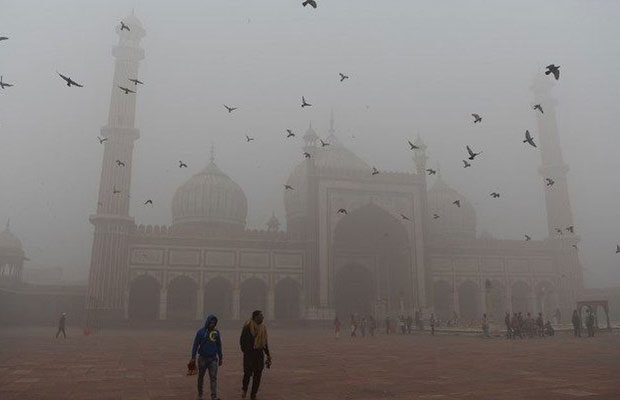(Mariya Ubaid) The word “smog” is a portmanteau of the words smoke and fog. It was introduced by H.A. Des Voeux in 1905 for the first time. Two types of smog have been recognized till now; sulfurous smog and photochemical smog. Sulfurous smog (London smog) is caused by the use of sulfur-bearing fossil fuels (coal), which is aggravated by dampness and a high concentration of suspended particulate matter in the air. Smog-like air pollution trapped higher in the atmosphere can persist as atmospheric brown clouds, which can cause climatic and health effects. Photochemical smog (Los Angeles smog) occurs in urban areas with large numbers of automobiles. This type of smog requires neither smoke nor fog and has its origin in the nitrogen oxides and hydrocarbon vapors emitted by automobiles, which then undergo photochemical reactions in the lower atmosphere.
The highly toxic gas ozone arises from the reaction of nitrogen oxides with hydrocarbon vapors in the presence of sunlight. The resulting smog causes a light brownish coloration of the atmosphere, reduce visibility, plant damage, irritation of the eyes, and respiratory distress. Globally, the occurrences of smog have been reported frequently in many major cities e.g., Beijing, Delhi, Lahore, Mexico City, Los Angeles, and Tehran. Air pollution has been one of Pakistan’s main environmental concerns in recent years. The situation has been worsening in Lahore – the heart of Pakistan, the capital of the Punjab province, and the city of gardens. Lahore, the second largest city in Pakistan has been ranked first in the latest air quality index (AQI) rankings of the most polluted cities in the world.
The current situation in Lahore is most alarming, with its fine particulate count repeatedly rising well above 40 times the World Health Organization’s air quality guideline values. The Global Alliance on Health and Pollution estimated that 128,000 Pakistanis die annually due to air pollution-related illnesses. Air quality has been steadily declining in Lahore due to vehicular emissions, industrial pollution, fossil fuel-fired power plants, burning waste materials, and burning coal by thousands of brick kilns scattered. The government of Pakistan should allocate appropriate funds for monitoring and reducing harmful emissions, carrying out nationwide afforestation programs, and switching to renewable resources. Considering the bleak outlook that the current situation portrays, the need of the hour is establishing a stringent action plan to prevent adverse outcomes on public health and reduce the economic burden on the health sector of the country. Emission sources such as automobile exhaust gases, industrial sector pollutants, disposal, use, and burning of solid waste, and agriculture activities should be controlled and mitigated to abate smog.
Public awareness about anthropogenic emission activities and related harmful effects on human health and environment could be a preventive tool to control smog. Public service messages on television, radio, and the Internet, along with the distribution of educational pamphlets and brochures could also be an effective step for improvement of air quality.









